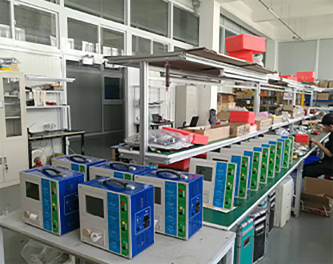 English
English


Current Pulse Generator Technology Advancements and Applications in Electronics and Research
Current Impulse Generator An Overview
The current impulse generator, an essential instrument in high-voltage engineering, plays a pivotal role in assessing the performance and reliability of electrical equipment. This device is primarily used to create controlled surge currents of short duration to simulate the electrical stresses that equipment may encounter during its operational life. Understanding the functionality, applications, and significance of current impulse generators can provide insight into their importance in the field of electrical engineering.
What is a Current Impulse Generator?
A current impulse generator is designed to produce a sharp, high-amplitude current pulse that mimics the transients experienced by electrical insulation and components due to lightning strikes, switching operations, or short circuits. The typical waveform generated is a unipolar or bipolar pulse, characterized by its swift rise and decay times. The generator usually consists of a capacitor bank, a charging circuit, a triggering mechanism, and a load arrangement to direct the generated pulses.
Working Principle
The operation of a current impulse generator is based on the discharge of energy stored in capacitors. Initially, the capacitors are charged to a specific voltage level using a high-voltage power supply. Once charged, a triggering mechanism initiates the discharge through a controlled path, often involving a switch or spark gap. The rapid discharge of the capacitor bank produces a high-current pulse that can then be applied to the test object.
The design and configuration of the generator can influence the shape and magnitude of the output current pulse. Common parameters include rise time, peak current, and pulse duration, which are critical for simulating real-world scenarios accurately.
Applications
Current impulse generators find widespread application in various sectors within electrical engineering
current impulse generator

1. Testing Insulation Systems One of the primary uses of current impulse generators is to evaluate the dielectric properties of insulating materials used in transformers, cables, and switchgears. By subjecting these systems to controlled impulse currents, engineers can assess their ability to withstand high-stress conditions.
2. Component Testing Components such as circuit breakers, surge protectors, and transformers are often tested using impulse generators to ensure their reliability and performance under fault conditions. The impulses simulate situations that components may experience during operation and help in identifying potential failures.
3. Research and Development In academic and industrial research settings, current impulse generators are essential for developing new materials and insulation systems. By testing various configurations and compositions under hyper-stress conditions, researchers can innovate safer and more efficient electrical systems.
4. Compliance Testing Regulatory bodies often require manufacturers to test their products against international standards. Current impulse generators assist in compliance testing to ensure that products can handle transient conditions while maintaining operational integrity.
Importance in Electrical Engineering
The relevance of current impulse generators extends beyond mere testing. They have become integral in advancing the safety and performance of electrical equipment. In a world increasingly reliant on electricity, ensuring that components can withstand unexpected surges is crucial to preventing failures that could lead to catastrophic accidents or significant financial losses.
Furthermore, as technology continues to evolve, the need for robust testing methodologies grows. Current impulse generators provide a means to explore new limits, pushing the boundaries of performance and design capabilities. Innovations in materials science, power generation, and electrical system design all rely on insights gained from impulse testing.
Conclusion
In summary, the current impulse generator is a vital tool in the assessment and development of electrical equipment. Its ability to simulate transient electrical conditions allows engineers to ensure that insulation and components are capable of withstanding real-world challenges. As technology advances and electrical systems become more complex, the role of impulse generators will remain crucial in driving innovations and maintaining safety standards in the industry. By understanding and utilizing this technology, engineers can contribute to the creation of more resilient and efficient electrical systems, paving the way for a more reliable energy future.
-
Differences between open cup flash point tester and closed cup flash point testerNewsOct.31,2024
-
The Reliable Load Tap ChangerNewsOct.23,2024
-
The Essential Guide to Hipot TestersNewsOct.23,2024
-
The Digital Insulation TesterNewsOct.23,2024
-
The Best Earth Loop Impedance Tester for SaleNewsOct.23,2024
-
Tan Delta Tester--The Essential Tool for Electrical Insulation TestingNewsOct.23,2024





